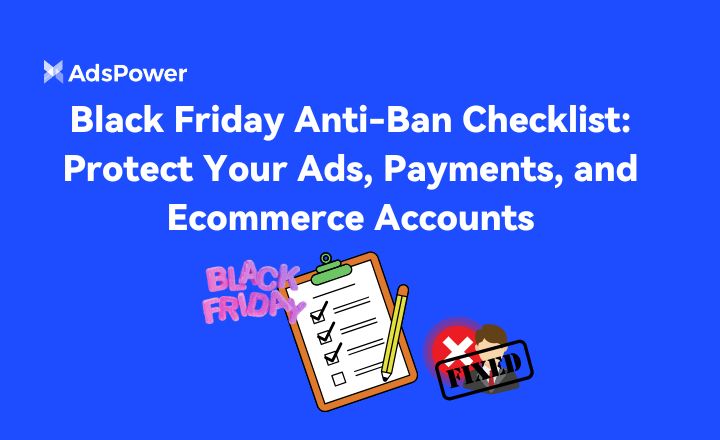एकाधिक स्टोर के साथ अपने Shopify व्यवसाय को बढ़ाने के फायदे और नुकसान
स्टेटिस्टा के अनुसार, वैश्विक ई-कॉमर्स बाज़ार के 2021 में 4.9 ट्रिलियन डॉलर तक पहुँचने की उम्मीद है! यह वृद्धि ऑनलाइन शॉपिंग की बढ़ती लोकप्रियता से प्रेरित है, खासकर विकासशील देशों में। एक उद्यमी या ऑनलाइन रिटेलर के रूप में, आप कई Shopify वेबसाइट बनाकर इस चलन का लाभ उठाने पर विचार कर सकते हैं। यह एक स्मार्ट कदम है जो आपकी पहुँच बढ़ाने, राजस्व स्रोतों में विविधता लाने और आपके ब्रांडिंग अवसरों को बढ़ाने में आपकी मदद कर सकता है। लेकिन इससे पहले कि आप इसमें उतरें, इसके फायदे और नुकसान दोनों को समझना ज़रूरी है।
आपको मल्टी-स्टोर ई-कॉमर्स के अवसर का लाभ क्यों उठाना चाहिए?
बढ़ी हुई पहुँच और लक्ष्यीकरण: कई ई-कॉमर्स वेबसाइट चलाने से आप ज़्यादा व्यापक दर्शकों तक पहुँच सकते हैं और विशिष्ट ग्राहक वर्गों को लक्षित कर सकते हैं। Shopify ने पाया कि कई ऑनलाइन स्टोर वाले व्यवसाय, एकल स्टोर वाले व्यवसायों की तुलना में 16% अधिक राजस्व उत्पन्न करते हैं। आप प्रत्येक वेबसाइट की विशिष्ट ज़रूरतों को पूरा करने के लिए उसके लिए अनोखे डिज़ाइन, सामग्री और मार्केटिंग रणनीतियाँ बना सकते हैं।
बेहतर ब्रांडिंग के अवसर: प्रत्येक वेबसाइट का अपना अनूठा डिज़ाइन, सामग्री और ब्रांडिंग तत्व हो सकते हैं, जिससे आप विभिन्न लक्षित बाज़ारों की ज़रूरतों को पूरा करते हुए एक सुसंगत ब्रांड पहचान बना सकते हैं।
बेहतर SEO और ऑर्गेनिक ट्रैफ़िक: प्रत्येक वेबसाइट विशिष्ट कीवर्ड पर ध्यान केंद्रित कर सकती है और अपनी सामग्री को तदनुसार अनुकूलित कर सकती है, खोज परिणामों में उच्च रैंकिंग की संभावना बढ़ जाती है। इंजन परिणाम पृष्ठ। आप अपनी वेबसाइटों के बीच इंटरलिंकिंग के अवसर बनाकर अधिक प्रभावी ढंग से बैकलिंक्स भी बना सकते हैं।
उत्पाद की दृश्यता में वृद्धि: कई ई-कॉमर्स वेबसाइट आपके उत्पादों के लिए अधिक दृश्यता प्रदान करती हैं। ग्राहक जो खोज रहे हैं उसे जल्दी से पा सकते हैं और किसी विशेष उत्पाद श्रेणी के भीतर विभिन्न विकल्पों का पता लगा सकते हैं। आप विभिन्न वेबसाइटों पर संबंधित उत्पादों का क्रॉस-प्रमोशन भी कर सकते हैं।
आपके सामने आने वाली दुविधा
Shopify पर कई ई-कॉमर्स वेबसाइट चलाने से कई लाभ मिल सकते हैं, लेकिन इसके साथ ही कुछ चुनौतियाँ और नुकसान भी हैं। इस खंड में, हम कई ई-कॉमर्स वेबसाइट रखने के कुछ संभावित नुकसानों का पता लगाएंगे और उन्हें प्रभावी ढंग से प्रबंधित करने के लिए ज़रूरी बातों पर चर्चा करेंगे।
SEO चुनौतियाँ
कई वेबसाइटों का प्रबंधन सर्च इंजन ऑप्टिमाइज़ेशन (SEO) के लिए चुनौतियाँ पेश कर सकता है। औसतन, किसी वेबसाइट को Google के पहले पेज पर रैंक करने में 10 महीने लगते हैं। सभी साइटों पर एक जैसी ब्रांडिंग और संदेश बनाए रखना मुश्किल हो सकता है, और इसमें डुप्लिकेट सामग्री और कीवर्ड के दुरुपयोग का जोखिम भी होता है। इसके अलावा, कई साइटों के लिए बैकलिंक्स और अथॉरिटी बनाना और भी मुश्किल हो सकता है, जो आपके समग्र SEO प्रयासों पर नकारात्मक प्रभाव डाल सकता है।
बढ़ी हुई जटिलता और प्रबंधन आवश्यकताएँ
बढ़ती जटिलता और प्रबंधन आवश्यकताओं के कारण कई ई-कॉमर्स वेबसाइटों का संचालन चुनौतीपूर्ण हो सकता है। प्रत्येक वेबसाइट को अच्छा प्रदर्शन करने के लिए नियमित अपडेट, रखरखाव और निगरानी की आवश्यकता होती है। इसके लिए एक साथ कई प्लेटफ़ॉर्म प्रबंधित करने के लिए अतिरिक्त समय और संसाधन लगाने पड़ते हैं।
सीमित संसाधनों वाले छोटे व्यवसाय मालिकों या उद्यमियों के लिए कई वेबसाइटों का प्रबंधन करना विशेष रूप से कठिन होता है। इसके लिए प्रत्येक वेबसाइट की विशिष्ट आवश्यकताओं की गहरी समझ आवश्यक है, जिसमें डिज़ाइन, सामग्री निर्माण, इन्वेंट्री प्रबंधन, ग्राहक सहायता और मार्केटिंग रणनीतियाँ शामिल हैं। प्रत्येक वेबसाइट को पर्याप्त समय और संसाधन आवंटित न करने से उनके प्रदर्शन पर नकारात्मक प्रभाव पड़ सकता है और समग्र व्यावसायिक विकास में बाधा आ सकती है।
विज्ञापनदाता खाता निलंबन
यदि आपके पास विभिन्न देशों को लक्षित करने वाली कई ई-कॉमर्स वेबसाइटें हैं, तो आपको प्रत्येक क्षेत्र को प्रभावी ढंग से लक्षित करने के लिए कई Google Ads खाते बनाने पड़ सकते हैं। हालाँकि, Google प्रत्येक खाते के लिए विज्ञापनदाता सत्यापन का अनुरोध कर सकता है, जो समय लेने वाला हो सकता है और इसके लिए अतिरिक्त संसाधनों की आवश्यकता हो सकती है। यदि आपके पास केवल एक कंपनी है, तो आप सोच रहे होंगे कि क्या आप एक ही निगमन दस्तावेज़ कई खातों के लिए जमा कर सकते हैं। हालांकि यह संभव हो सकता है, सिस्टम को दरकिनार करने पर निलंबन का जोखिम है.
इसका समाधान क्या है?
कई ई-कॉमर्स वेबसाइटों के लिए सावधानीपूर्वक योजना और कार्यान्वयन की आवश्यकता होती है। ध्यान रखने योग्य मुख्य बातें यहां दी गई हैं:
एकरूप ब्रांडिंग और उपयोगकर्ता अनुभव सुनिश्चित करें
एक सुसंगत ब्रांड पहचान बनाने के लिए सभी वेबसाइटों पर एकरूप ब्रांडिंग बनाए रखें। इसमें एकरूप लोगो, रंग योजनाएँ, फ़ॉन्ट और संदेश का उपयोग शामिल है। नेविगेशन मेनू, खोज कार्यक्षमता और चेकआउट प्रक्रियाएँ समान हों, यह सुनिश्चित करके सभी वेबसाइटों पर एक सहज उपयोगकर्ता अनुभव प्रदान करें।
संसाधनों का प्रभावी ढंग से आवंटन करें
यह निर्धारित करें कि किन वेबसाइटों को उनके प्रदर्शन या रणनीतिक महत्व के आधार पर अधिक ध्यान या संसाधनों की आवश्यकता है। अधिक क्षमता वाली वेबसाइटों के लिए अधिक मार्केटिंग बजट आवंटित करें या विशिष्ट साइटों के प्रबंधन के लिए अतिरिक्त कर्मचारियों को नियुक्त करें। सर्वोत्तम परिणाम सुनिश्चित करने के लिए विभिन्न वेबसाइटों पर संसाधनों का संतुलन बनाए रखें।
अपने मल्टी-स्टोर व्यवसाय को और बेहतर बनाने के लिए टूल का उपयोग करें
मान लीजिए कि आपके पास तीन ई-कॉमर्स वेबसाइट हैं: एक जूतों के लिए, एक कपड़ों के लिए, और एक इलेक्ट्रॉनिक्स के लिए। आप अपनी प्रगति पर नज़र रखने और व्यवस्थित रहने के लिए एक प्रोजेक्ट प्रबंधन टूल का उपयोग करना चाहते हैं। आप प्रोजेक्ट प्रबंधन टूल में तीन अलग-अलग प्रोजेक्ट बना सकते हैं, प्रत्येक वेबसाइट के लिए एक।
कई ई-कॉमर्स वेबसाइटों को बेहतर ढंग से प्रबंधित करने के लिए, आप Trello या आसाना। प्रत्येक वेबसाइट के लिए अलग-अलग प्रोजेक्ट बनाकर और सामग्री अपडेट करने, इन्वेंट्री प्रबंधित करने और बिक्री ट्रैक करने जैसी गतिविधियों के लिए कार्य असाइन करके, आप व्यवस्थित और ट्रैक पर रह सकते हैं। इसके अलावा, AdsPower जैसे एंटी-डिटेक्टर ब्राउज़र का इस्तेमाल आपकी गोपनीयता की रक्षा करने और आपकी ई-कॉमर्स वेबसाइटों को प्रबंधित करते समय वेबसाइटों को आपको ट्रैक करने से रोकने में मदद कर सकता है।
एंटी-डिटेक्टर ब्राउज़र का इस्तेमाल करने से कई ई-कॉमर्स वेबसाइटों को प्रबंधित करना भी आसान हो जाता है। यह आपको हर वेबसाइट पर अलग-अलग आईपी एड्रेस से लॉग इन करने, अपने ब्राउज़र फ़िंगरप्रिंट को बदलने और अपने ट्रैफ़िक को एन्क्रिप्ट करने की सुविधा देता है। इस तरह, आप धोखाधड़ी का पता लगाने वाले सिस्टम की नज़रों से बच सकते हैं, अपनी पहचान सुरक्षित रख सकते हैं और अपने क्षेत्र में ब्लॉक की गई वेबसाइटों तक पहुँच सकते हैं। जब आप एंटीडिटेक्ट ब्राउज़र को किसी प्रोजेक्ट मैनेजमेंट टूल के साथ जोड़ते हैं, तो आप अपने वर्कफ़्लो को सुव्यवस्थित और अपनी उत्पादकता को अधिकतम कर सकते हैं।
यह तय करना कि क्या कई Shopify स्टोर आपके लिए सही हैं
संक्षेप में, Shopify पर कई ई-कॉमर्स वेबसाइट चलाने के स्पष्ट लाभ हैं, लेकिन व्यवसायों के लिए इस रणनीति को अपनाने का निर्णय लेने से पहले अपनी आवश्यकताओं और उपलब्ध संसाधनों का सावधानीपूर्वक मूल्यांकन करना महत्वपूर्ण है। इसके फायदे और नुकसान पर अच्छी तरह से विचार करें, और सुनिश्चित करें कि आपके पास अतिरिक्त काम को संभालने के लिए संसाधन हैं। अंततः, निर्णय इस बात पर आधारित होना चाहिए कि प्रतिस्पर्धी ई-कॉमर्स परिदृश्य में व्यवसाय के दीर्घकालिक विकास और सफलता के लिए क्या सबसे अच्छा होगा। आपके सभी प्रयासों के लिए शुभकामनाएँ!

लोग यह भी पढ़ें
- क्रोम (मोबाइल और डेस्कटॉप) पर खाते कैसे बदलें

क्रोम (मोबाइल और डेस्कटॉप) पर खाते कैसे बदलें
डेस्कटॉप और मोबाइल के लिए Chrome पर अकाउंट बदलने का तरीका जानें। डेटा के मेल-मिलाप से बचें, कई Google अकाउंट सुरक्षित रूप से प्रबंधित करें, और अलग-अलग प्रोफ़ाइल का इस्तेमाल करें।
- ब्लैक फ्राइडे एंटी-बैन चेकलिस्ट: अपने विज्ञापनों, भुगतानों और ईकॉमर्स खातों की सुरक्षा करें

ब्लैक फ्राइडे एंटी-बैन चेकलिस्ट: अपने विज्ञापनों, भुगतानों और ईकॉमर्स खातों की सुरक्षा करें
इस ब्लैक फ्राइडे पर अपने विज्ञापनों, भुगतान गेटवे और ई-कॉमर्स खातों को एक सिद्ध प्रतिबंध-विरोधी चेकलिस्ट और AdsPower रणनीतियों के साथ सुरक्षित रखें ताकि झंडों से बचा जा सके
- 2025 के 9 सर्वश्रेष्ठ TikTok प्रॉक्सी

2025 के 9 सर्वश्रेष्ठ TikTok प्रॉक्सी
2025 के 9 सर्वश्रेष्ठ TikTok प्रॉक्सी के साथ वैश्विक विकास को अनलॉक करें। TikTok स्वचालन के लिए शीर्ष आवासीय और 4G/5G मोबाइल प्रॉक्सी की तुलना करें ताकि प्रतिबंधों को दरकिनार किया जा सके और
- सोलो मार्केटर की ब्लैक फ्राइडे सुपरपावर: AdsPower के साथ एक एजेंसी की तरह स्केलिंग

सोलो मार्केटर की ब्लैक फ्राइडे सुपरपावर: AdsPower के साथ एक एजेंसी की तरह स्केलिंग
ब्लैक फ्राइडे के लिए सोलो मार्केटर? अपने विज्ञापनों को स्केल करने, कई Facebook और TikTok अकाउंट को सुरक्षित रूप से प्रबंधित करने और AdsPower के साथ कार्यों को स्वचालित करने का तरीका जानें।
- VPN के बिना Roblox खेलें: Roblox तक पहुँचने के सुरक्षित और आसान तरीके

VPN के बिना Roblox खेलें: Roblox तक पहुँचने के सुरक्षित और आसान तरीके
जानें कि 2025 में बिना VPN के Roblox को सुरक्षित और आसानी से कैसे खेलें। कहीं भी Roblox का आनंद लेने के लिए काम करने के तरीके, सुरक्षित तरीके और सुझाव जानें।



